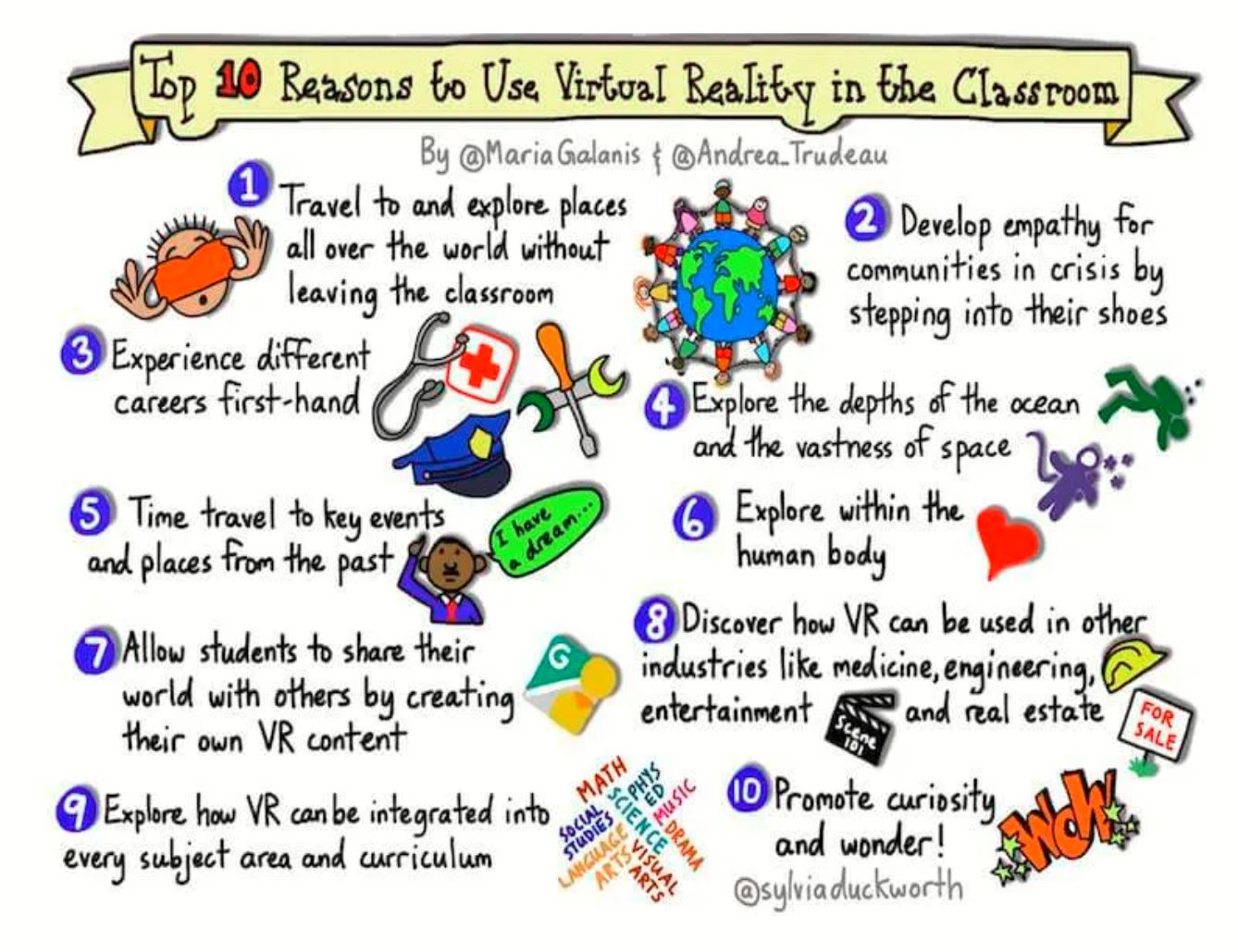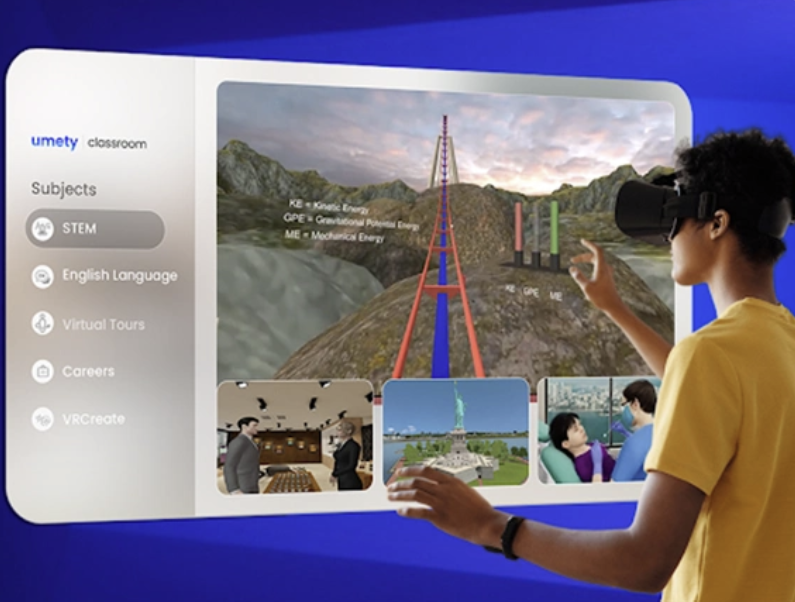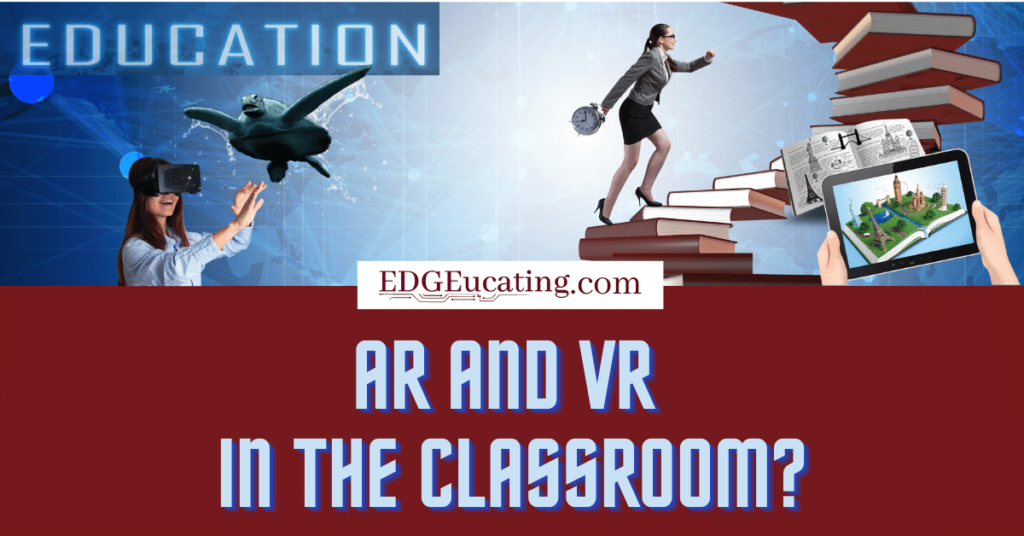Why use AR, VR, and virtual learning tools in the classroom?
As a teacher, I routinely hear students commenting on their lack of interest in their classes or the content being taught. Students often say they’re bored in school. They don’t find learning interesting. They’d prefer to socialize to learning.
Sometimes reading from a textbook just doesn’t stick. Using educational technology like Augmented Reality (AR) and Virtual Reality (VR) in education helps students see and feel ideas—so they understand better and stay excited to learn through immersive learning.
Students want to be famous YouTubers or pro athletes. They don’t see the point of schoolwork.
There are better ways to learn. Real-world projects and tech make learning meaningful. This makes school more interesting and learning fun and real!
Because students are immersed in a world full of technology, they need to see that world carry over into their learning in order to find it meaningful and relevant, and increase student engagement.
Boosting Virtual Learning Equals Student Engagement
AR and VR let students explore and interact in ways textbooks can’t match. They bring learning alive, spark curiosity, and boost student engagement, while helping kids build 21st century skills like critical thinking, working with others, and problem solving.
These experiences make learning fun and real—classic examples of immersive learning in action. By using augmented and virtual reality in education, students gain deeper connections to the material and remember it longer.
What is AR, and why is it beneficial for students?
According to Credencys, AR adds digital info to the real world. It’s like a picture that shows a lot. AR helps students understand by seeing, not just reading.
If a picture is worth a thousand words then AR is worth a million. Augmented Reality allows students to visualize the subject or content, rather than reading a chapter. This will allow students to get a better understanding and insights about the topic while seeing the relevance of content in their life and promoting student engagement.
According to eLearning, one of the most significant benefits of Augmented Reality in Learning and Development is that it does not require any investment in hardware. We can experience Augmented Reality using our smartphones or tablets by simply using an app to see a 2D image turn into a 3D animation.
What is VR, and why is it beneficial in the classroom?
Contrary to AR, Virtual Reality (VR) exists in an entirely artificial environment. VR is a fake world. It needs special devices to work. VR feels more real than AR. Sylvia Duckworth made a graphic on VR in class. It shows how VR can bring the world to students.

Why should educators use AR and VR in the classroom?
AR and VR are used in designing and business. Viar360 says VR helps in hiring and training. It makes learning exciting and relevant. This means that our students need to be using this technology if we plan to prepare them for college and careers and boost student engagement by making learning feel relevant and exciting.
Boosting virtual learning and student engagement
AR and VR let students explore and interact in ways textbooks can’t match. They bring learning alive, spark curiosity, and boost student engagement, while helping kids build 21st century skills like thinking critically, career exploration, and solving problems.
When I asked my students about using AR and VR in class, the excitement was clear. One student shared, “It lets us dive into what we learn in a deep way. For example, we can explore a clock or a rocket’s inside with VR.”
Another said, “I always wondered how big dinosaurs were. Now, with AR and VR, I can see it for myself. It’s like a real-life experience.”
These cutting edge resources for education are more than just cool tech—they create real student engagement. By making lessons interactive and memorable, AR and VR help students connect deeply with what they’re learning.
How can teachers use AR and VR for classroom field trips?
AR and VR open doors to places we can’t visit in real life. Students can explore the seafloor or a clock’s inside. EdTech says K–12 schools should offer rich experiences. AR and VR make this possible, sparking curiosity and exploration.
Read my article Google Expeditions Alternatives for more on field trip platforms. We’ve researched and picked our favorites.
For VR field trips, check out the Umety VR headsets. We found them to be the best quality for the price. They’re flexible for classroom use.

The “How To’s” of AR and VR in the classroom.
Teachers are the best resource for creative ideas to incorporate these student engagement technologies into their classrooms. They can help with setting up and using these technologies. See their ideas in Making Virtual Reality a Reality in Today’s Classrooms by The Journal.
To find out more about using AR and VR in the classroom and the hardware and curriculum that can be used, check out our article How to Access AR and VR in Education Today.
My feelings about AR and VR in school are mixed. I jumped into AR and VR years ago. I started using them years ago. But I saw some early products that didn’t work well in class. More recently, my favorite products are Kai’s Clan’s robots, Umety UmakeVR Packages, Merge Cubes, and Play Shifu.
Kai’s Clan mixes the real and virtual worlds into one fun learning space. Kai’s Clan breaks the traditional geographical barriers to bring kids from around the world together and allows them to solve challenges in exciting new ways. They code robots to move around a special mat in real-time, whether they’re in the same room or across the globe.
They can design their own robot avatars and virtual worlds using familiar and fun tools like TinkerCad and Minecraft, then see them come to life. Students might drive a Mars Rover, fly a helicopter over a busy city, or operate a forklift in a virtual warehouse. They can even work together in multiplayer mode, interacting with other robots and objects. It’s hands-on, creative, and full of teamwork—perfect for building 21st century skills like problem-solving, collaboration, and critical thinking.
Merge adds another exciting layer to virtual learning. Using the Merge Cube, students can hold and explore 3D digital objects—like a beating heart, a planet, or even a dinosaur—right in their hands. The Merge EDU lesson library offers hundreds of standards-aligned science simulations, STEM projects, and interactive activities. These ready-to-use lessons make it easy for teachers to integrate cutting edge resources for education into their classrooms while keeping student engagement high.
Living Pop-Ups brings reading to life in a whole new way. When students point a tablet at a page, characters and scenes jump off the paper in 3D. This makes reading more interactive, boosts comprehension, and helps even reluctant readers get excited about books.
The Future of Student Engagement Starts Here
These cutting-edge resources for education make learning more than just reading and listening—they turn it into an adventure. They open doors to endless possibilities. As Promethean World puts it: “From taking a walk through the world’s galleries and museums to launching students into space, or even a class trip to see the dinosaurs, it’s both educational and fun and can capture the attention of the digital generation across all disciplines.”
Teachers using these AR and VR tools can truly broaden their students’ horizons, making learning exciting, relevant, and unforgettable. These resources are more than just tech—they’re powerful catalysts for student engagement and 21st-century skill-building. Additionally, they showcase how augmented and virtual reality in education bring immersive learning into everyday lessons—making learning not just informative, but unforgettable.
I hope this article helps you understand AR and VR. I hope it encourages you to use them in class. Share your experiences in the comments below.
Immerse your students in a new world with augmented and virtual reality teaching!


